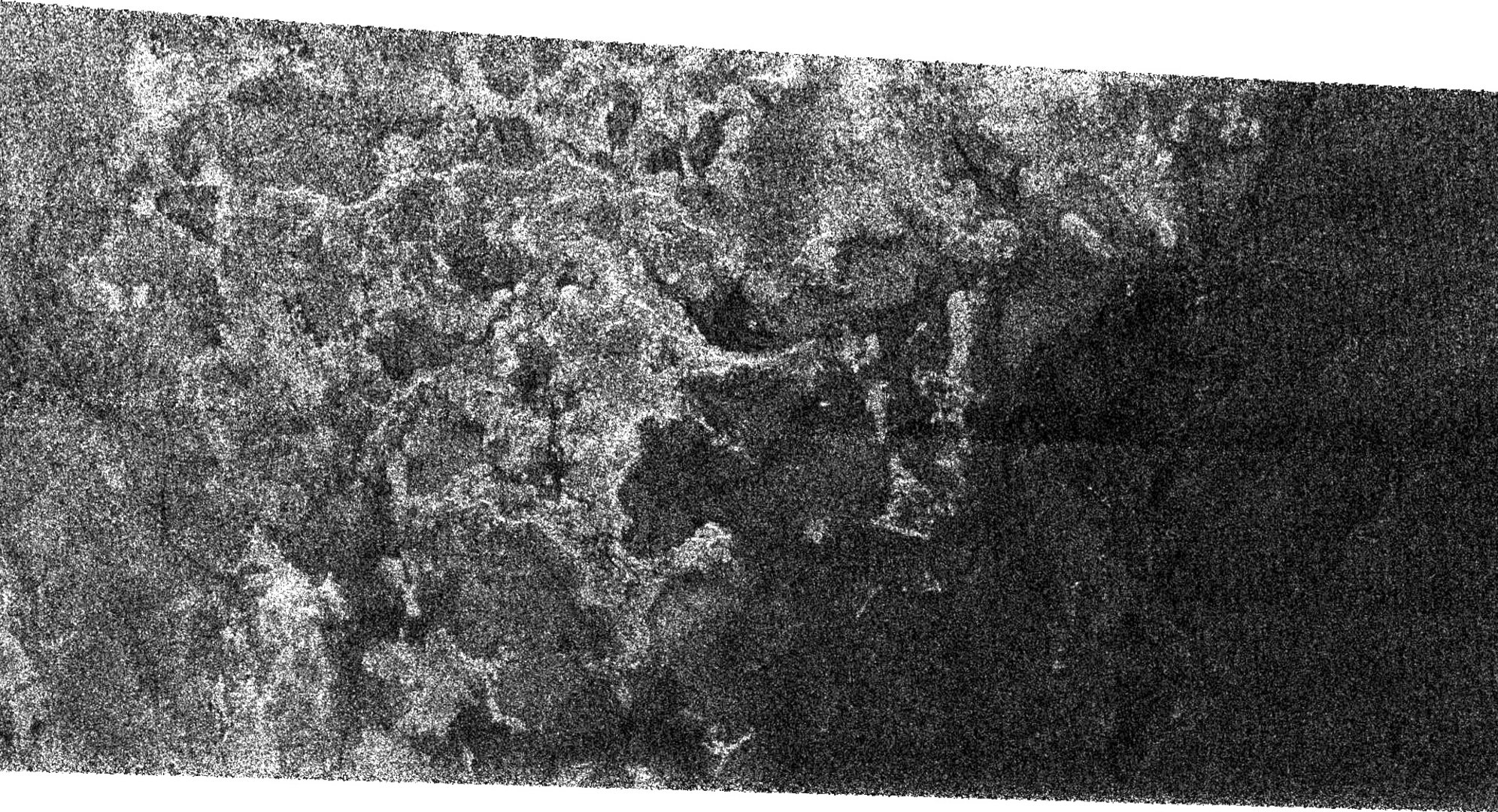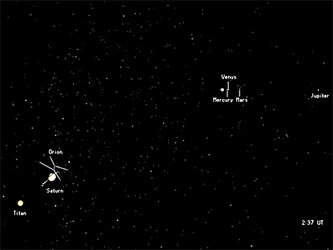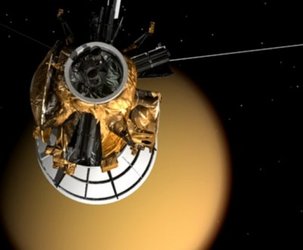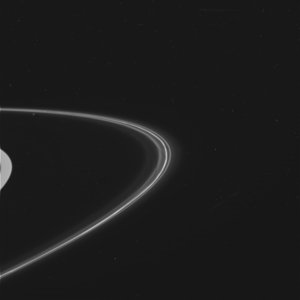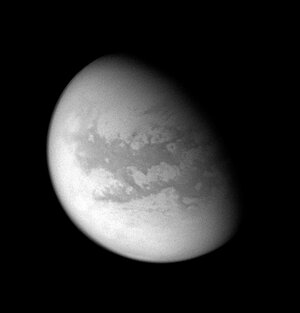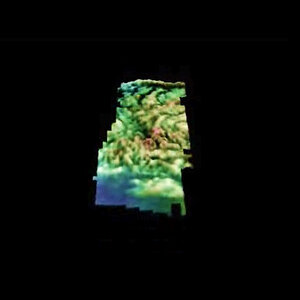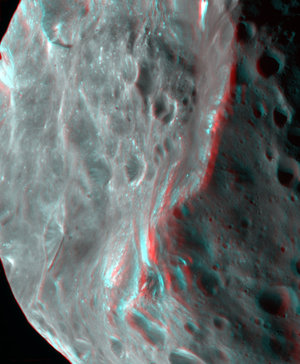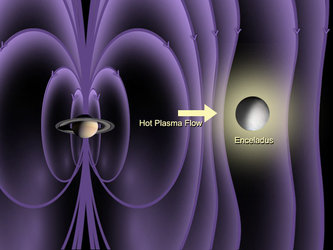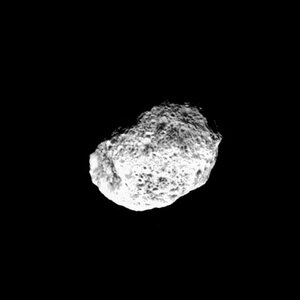Dramatic shoreline seen on Titan
The NASA/ESA/ASI Cassini spacecraft returned these images after its recent eighth fly-by of Titan on 7 September 2005. They show evidence of what appears to be a large shoreline cutting across the moon's southern hemisphere.
The Cassini radar instrument was jointly realised by NASA’s Jet Propulsion Laboratory, and the Italian space agency, ASI, with team members from the USA and several European countries. One of the RADAR team members, Dr Enrico Flamini, Solar System Exploration Missions Manager at ASI, said, "The radar and Cassini are working very well, we’re very pleased. The quality of images returned is extremely high."
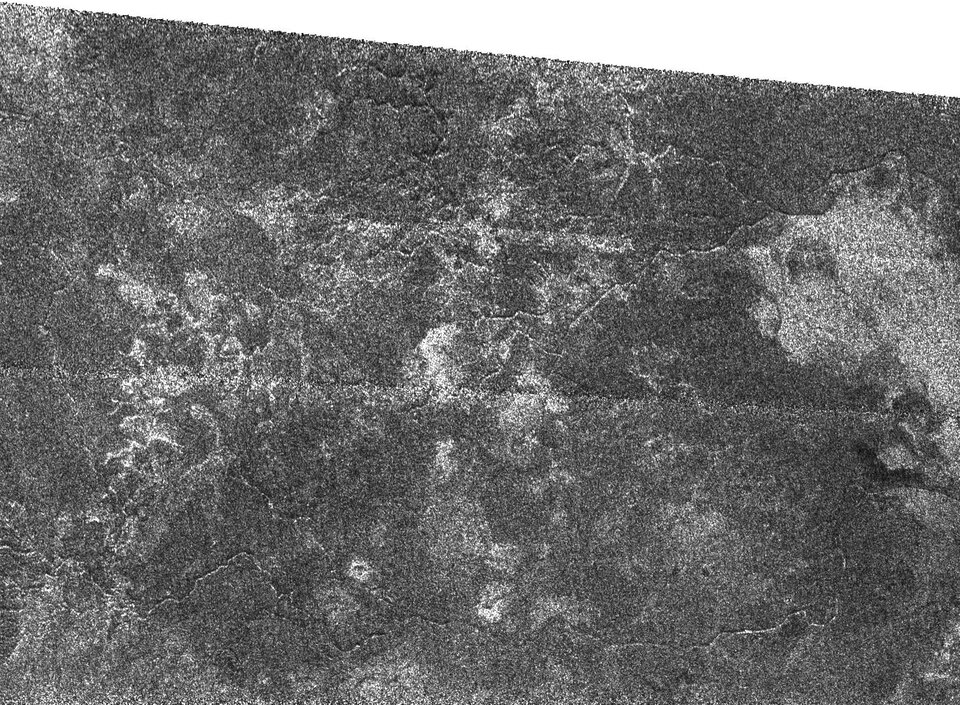
The images show what looks like a shoreline dividing a distinct bright and dark region roughly 1700 kilometres long by 170 kilometres wide. Directly to the right of a bright and possibly rough area is one that is very dark and smooth.
The bright patterns in the dark area indicate that it may once have been flooded with liquid that may now have partially receded. Bay-like features also lead scientists to speculate that the bright-dark boundary is most likely a shoreline. A network of channels runs across the bright terrain, indicating that fluids, probably liquid hydrocarbons, have flowed across this region.
Taken together with the two other radar passes in October 2004 and February 2005, these very high-resolution images have identified at least two distinct types of drainage and channel formation.
Some channels in images from this pass are long and deep, with angular patterns and few tributaries, suggesting that fluids flow over great distances, up to 100 kilometres. Some of them may have been fed by springs, and others form a denser, more complicated network that might indicate rainfall.
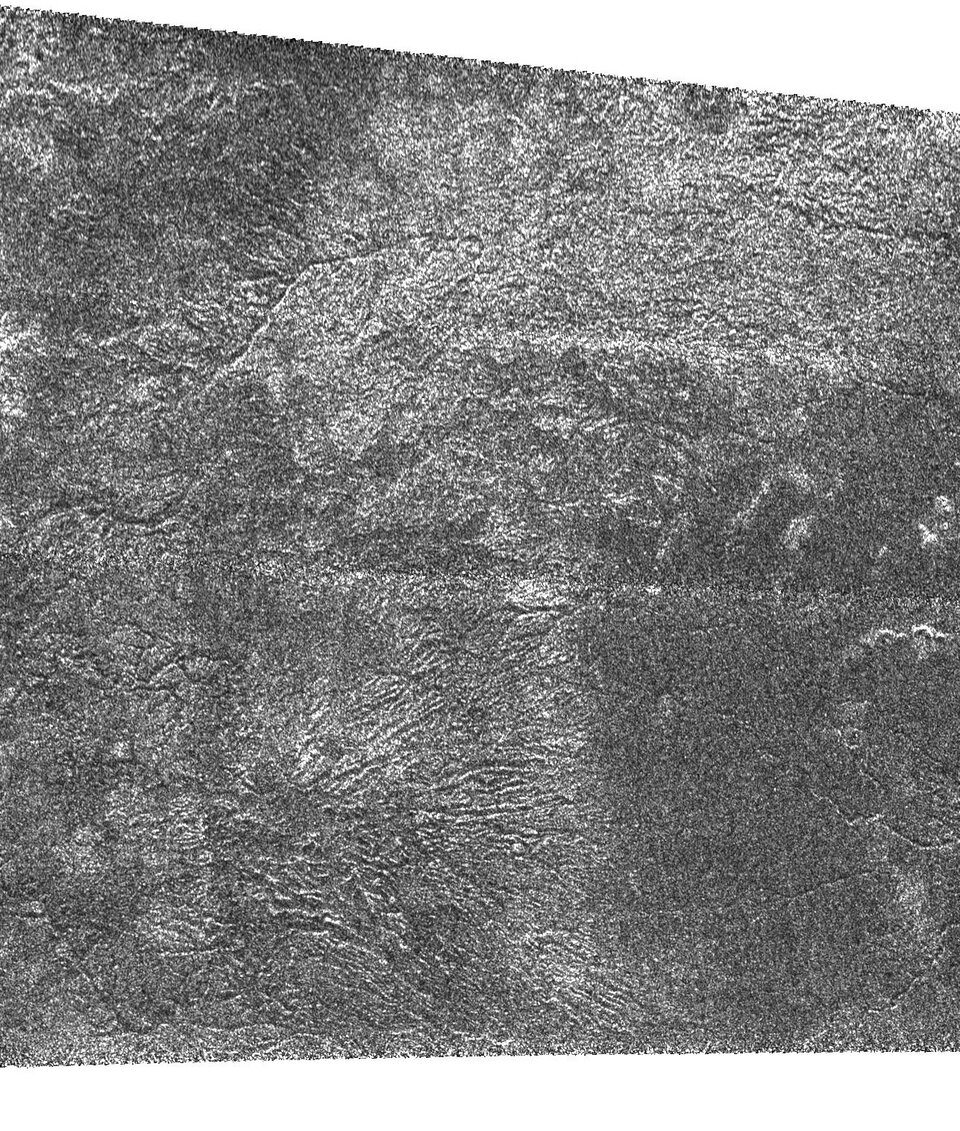
"The geological evidence clearly shows there has been flowing liquid on the surface, forming large basins, in the recent past. This implies a large amount of liquid on the surface. These features are ‘young’, as they are deep and well defined and not altered by weathering or erosion.
"But what we do not yet know is whether or not the processes that formed them are episodic. In the next year or so we may see evidence for ‘seasons’, or cycles in Titan’s weather such as melting, flooding and possibly precipitation," said Enrico Flamini.
Titan has an environment similar to that of Earth before biological activity forever altered the composition of Earth's atmosphere. The major difference on Titan, however, is the absence of liquid water and the very low temperature.
"The fluid activity seen here is certainly not due to water, but to some hydrocarbon substance which is a liquid at these very low temperatures, but what it is exactly and its behaviour are still puzzling for us. Hopefully, with over 30 more passes over Titan to go, we will find out what this is," added Enrico Flamini.
"With a thick, nitrogen-rich atmosphere, Titan was until recently presumed to hold large seas or oceans of liquid methane, but Cassini has not yet found evidence for these large seas, but the search will continue," said ESA’s Huygens Project Scientist and Mission Manager, Jean-Pierre Lebreton.
This was Cassini's eighth out of 45 Titan fly-bys planned in the four-year mission. The next Cassini fly-by will be on 28 October when the radar team will focus on the landing site of ESA’s Huygens probe close to the equator.
Jean-Pierre Lebreton said: "We’re looking forward to this fly-by very much. In the next radar images we should be able to see the area of our probe’s landing site with an expected resolution of about one kilometre. It should help us to pinpoint the Huygens landing site co-ordinates.
"So far, with Huygens data alone, we believe we have reconstructed the co-ordinates of the landing site to an accuracy of 50 kilometres or so. Not bad, but with the help of our mother spacecraft, we expect to do even better, as additional radar opportunities are expected during later fly-bys!"
For more information:
Jean-Pierre Lebreton, ESA Huygens Mission Manager
E-mail: jplebret @ rssd.esa.int
Enrico Flamini, ASI Programme Manager
E-mail: enrico.flamini @ asi.it
Carolina Martinez, NASA Jet Propulsion Laboratory, Pasadena, California, USA
Tel: 001 818 354 9382


